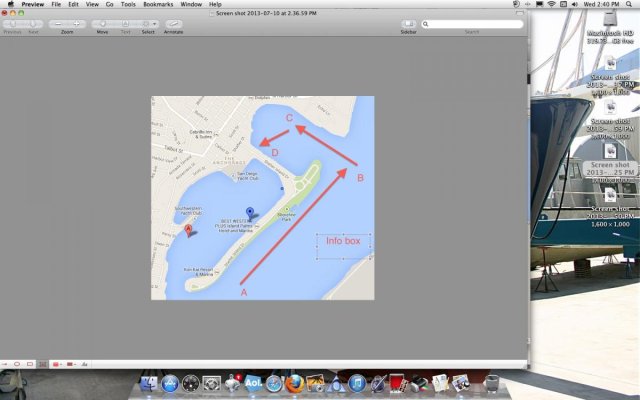Codger2
Guru
- Joined
- Oct 11, 2007
- Messages
- 6,691
- Location
- US
- Vessel Name
- Circuit Breaker
- Vessel Make
- 2021..22' Duffy Cuddy cabin
While coming back today from a 2 hour run with two friends, one of them was at the helm for the last hour and was ready to hand off to me for the final birthing. (I don't let anyone but me put the boat in the slip!)
The hand off was made at "A" and the boat continued toward "B", the turning point that leads to the fairway to my slip. At "B" I turned the helm to port and nothing happened, the boat continued toward the rocks as I tried again with full port rudder. No response. I shifted to reverse & applied a lot of power to stay off the rocks and that worked. While backing away, the Auto Pilot started screaming that the boat was off course. At the hand off (at "A") the previous helmsman had the AP on and I didn't notice it so when I attempted a hard turn to port, the AP wouldn't allow it. Switching the AP to Standby returned the rudder to input from the helm.
Lesson learned....(And no one was drinking!)


The hand off was made at "A" and the boat continued toward "B", the turning point that leads to the fairway to my slip. At "B" I turned the helm to port and nothing happened, the boat continued toward the rocks as I tried again with full port rudder. No response. I shifted to reverse & applied a lot of power to stay off the rocks and that worked. While backing away, the Auto Pilot started screaming that the boat was off course. At the hand off (at "A") the previous helmsman had the AP on and I didn't notice it so when I attempted a hard turn to port, the AP wouldn't allow it. Switching the AP to Standby returned the rudder to input from the helm.
Lesson learned....(And no one was drinking!)



Attachments
Last edited:








